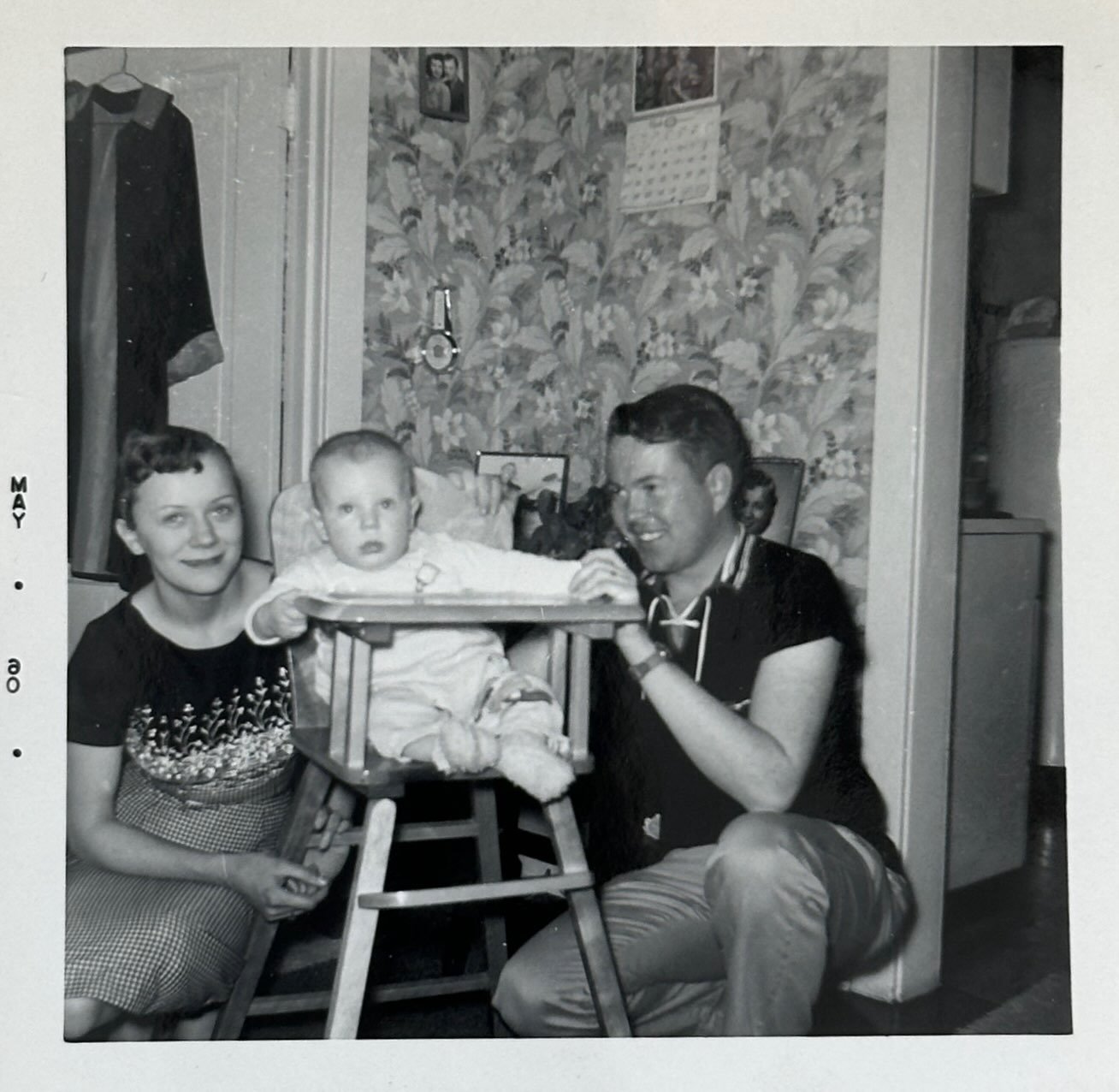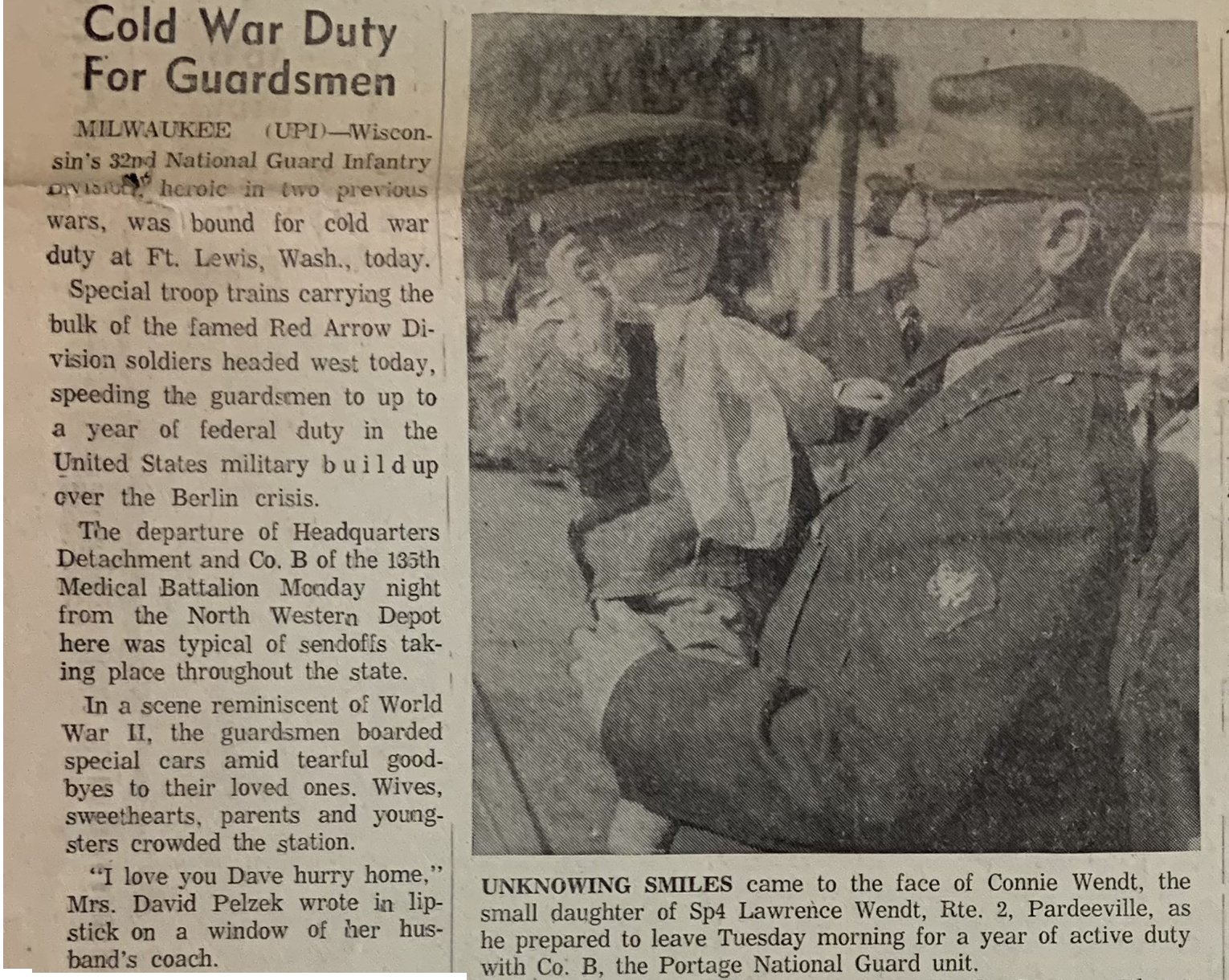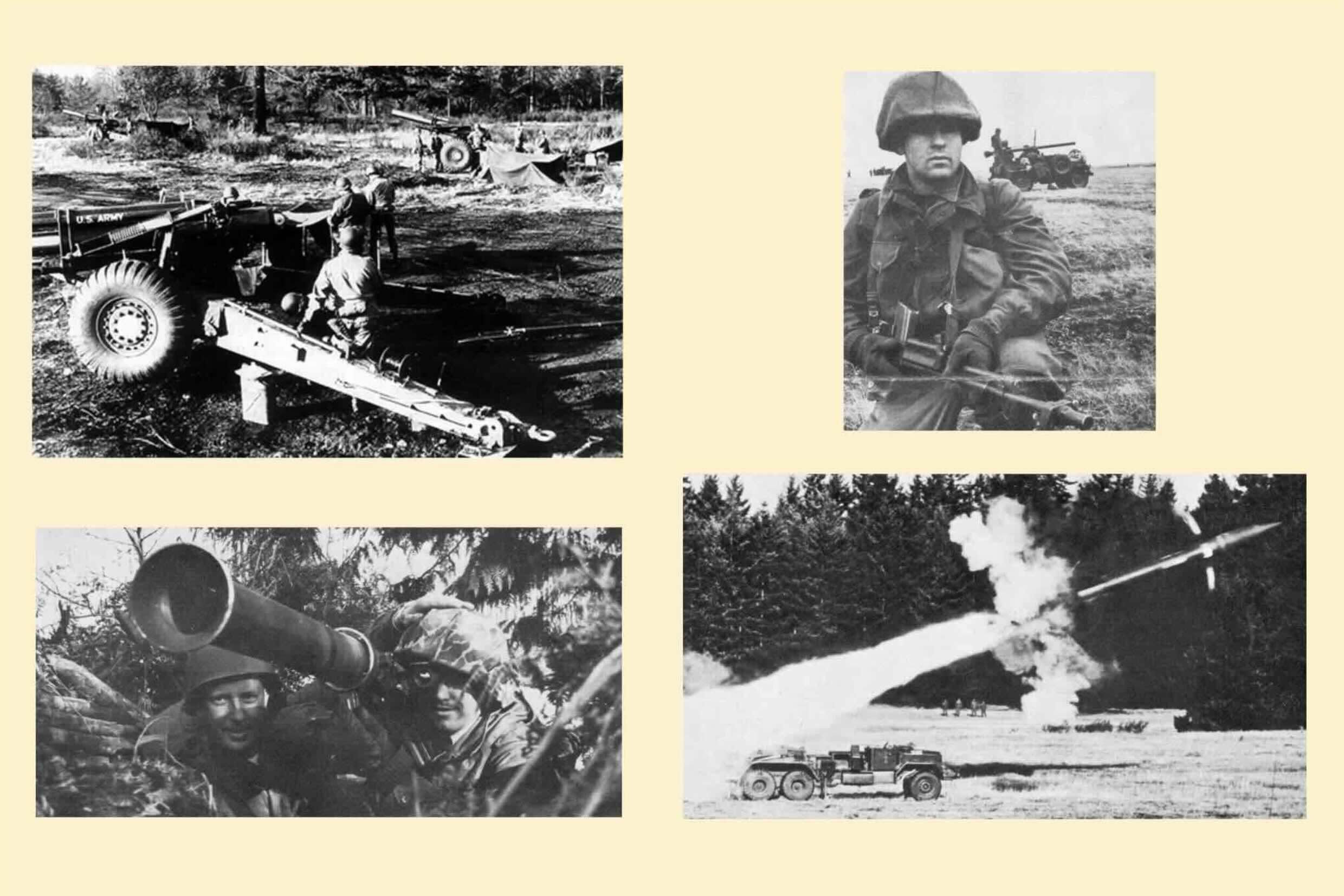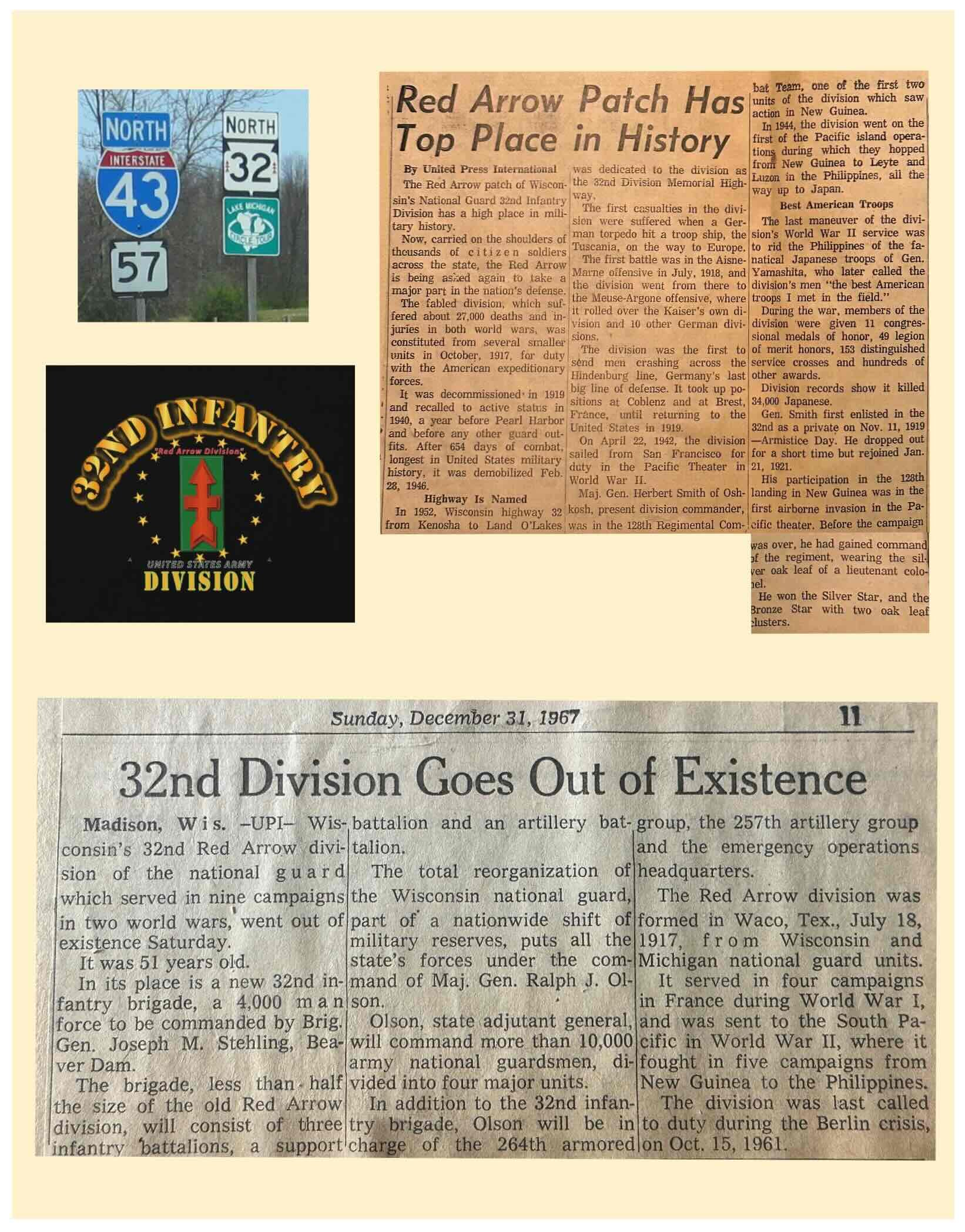1961 - Crisis in Berlin; My Dad Called to Active Military Duty (Part 2)
Posted October 25, 2024 - 54 Items
There is a TON of information on this page. If you want to breeze through it, and just hit the hight points, stick to reading the captions. If you want to learn more, you can click on an individual item below to see it enlarged to at least twice its size. If you want to return to Part 1 of this piece, click here.
I spent at least 40 hours or more going through all of my dad’s 32nd Division materials, as well as information on the web about the Berlin Crisis. Until assembling this information, I didn’t know a lot about my dad’s time at Fort Lewis. I know he was very proud of being called-up to active duty and serving his country, but he rarely talked about his time in the Army. When my dad died earlier this year, I was surprised to learn that he wanted to be buried in a military cemetery — the idea had never occurred to me. But after seeing what he went through, I better understand his choice. He stepped up with thousands of other men to protect us all from the dangers the Russians posed in 1961. He went through intense training to become combat-ready, never knowing for sure whether he might see actual combat. But even through all that, I’m confident he also looked at it as a fun and exciting time where everyone banded together.
Second Post November 11, 2024 - 8 Photos
My Dad’s funeral was on Monday, November 4, 2024 at the Southern Arizona Veterans' Memorial Cemetery (SAVMC) in Sierra Vista, Arizona. You can see the photos from the service at the bottom of this page, numbered A1-A8. The SAVMC is next door to the Army’s famous Fort Huachuca. The installation was founded in 1877 to secure the border with Mexico during the Apache Wars. In 1913, the fort became the base for the "Buffalo Soldiers," the 10th Cavalry Regiment composed of Black Americans. It served this purpose for twenty years. With the build-up during World War II, the fort had over 70,000 acres with quarters for 1,251 officers and 24,437 enlisted soldiers. The 92nd and 93rd Infantry Divisions, composed of Black American troops, trained at Huachuca. Fort Huachuca was declared a National Historic Landmark in 1976 for its role in ending the Apache Wars — the last major military actions against Native Americans — and as the site of the Buffalo Soldiers.
01 - My mom Darlene, my dad Dick, and me about a year before the Berlin Crisis.
02 - About a year later, my sister Cindy entered the picture.
03 - My dad's scrapbook of his Berlin Crisis heroic exploits.
04 - And then the news came that no one wanted to hear.
05 - "...divisions will be subjected to intensified training to bring them to combat readiness, available for use overseas if the Berlin crisis deepens." Scary stuff.
06 - My dad's Active Duty Order. He had to appear the day before my 2nd birthday - must have been a very stressful time for my mom and dad.
07 - My dad was always very proud to have been a member of the Red Arrow Division. His call-up was 21 years to the day after members of the famed 32nd were called-up to fight in WWII.
08 - October 1961 - No one looks too excited about the upcoming year. (L-R) me, my mom, my grandma (my mom's mom), my sister Cindy, and my aunt Kathy (my mom's sister).
09 - Professional photos of my sister and me taken in October 1961, I'm guessing this was so my dad could have them with him.
10 - The day no one wanted to arrive. And the damn Russians tested a 30-megaton nuclear bomb above the Arctic Circle the day before. What a terrifying situation.
11 - It was a difficult time for so many.
12 - I'm sure it was especially difficult for these two -- my uncle Bob (my mom's brother) and my aunt Marie. Bob was called-up along with my dad. After news of the call-up came, Bob and Marie got married earlier in October.
13 - More from the Portage paper -- Info about the departure ceremony and the anticipated training for the men. There is a sweet offer at the end of the article from "the mother of a Portage woman" who wanted to help soldiers by providing information and transportation. Definitely a different world back then.
14 - The last from Portage's October 24, 1961 newspaper, including some tear gas related humor.
15 - The soldiers' train route from Wisconsin to Fort Lewis.
16 - The Capital Times put together a huge spread honoring the soldiers departing from the Madison area.
17 - The patches are from my dad's uniform. And there is more from the Oct. 24 issue of the Cap Times. He was an SP-5 (Specialist) during this time. The Army used the Specialist (SP-4 to - SP-9) rank until 1985 in order to distinguish between tactical and technical experts. In today's world, an SP-5 is basically the same as a Sergeant rank. It's interesting too that the Vietnam conflict reared its ugly head during these events - If my dad had been just a little younger, he might have ended up there.
18 - Life Magazine even did a feature on the October 1961 call to duty.
19 - Life Magazine covered call-up events in Reedsburg, Wisconsin, which is only 30 miles from Portage. The photo spread provides a glimpse into Wisconsin small town life at this stressful time.
20 - So much disruption, just because the Russians couldn't play nice. Sounds a lot like the Russian war in Ukraine these days.
21 - A Senator from Wisconsin wanted to give Green Bay Packer players deferments from the call-up. The idea didn't set so well with the author of this editorial. (Note: Packer players Paul Hornung, Ray Nitschke, and Boyd Dowler were required to report for active duty, just like my dad -- but they somehow also managed to play pro football every weekend.)
22 - There were several articles in my dad's scrapbook about the eerie similarities between the WWII and 1961 call-ups of the 32nd. I think this is the most interesting of them.
23 - We followed my dad to Washington by car shortly after he left by train. My uncle Marv (my mom's brother), who was 16 at the time, drove my mom, my aunt Marie, my sister, and me in a little red Rambler about 2,000 miles across the country. My mom told me years ago that "The Lion Sleeps Tonight," by The Tokens, was frequently played on the radio during the drive.
24 - We ended up in Yelm, Washington, with a population of about 500 people in 1961. Unfortunately, I have very few family photos from this time period, but I've cobbled together a few pics from the web. As the map shows, Yelm is quite close to Ft. Lewis, Mt. Rainier, and Seattle.
25 - My dad's train ride ended at Fort Lewis, Washington, a 136 square mile army base with the capacity to hold tens of thousands of soldiers.
26 - These are updates on the soldiers from October and November 1961. Notice that my uncle Bob is in another photo, waiting for his paycheck!
27 - A member of Wisconsin's Congressional Delegation complained that the soldiers arrived at the Fort and then had nothing to do. I guess he never heard of "hurry up and wait" -- a phrase used in the military to describe the situation of rushing to complete a task or arrive at a destination, only to find nothing happening when you arrive.
28 - More complaints about the allegedly disorganized operation.
29 - Senator Proxmire of Wisconsin conducted his own inspection of Fort Lewis, even bunking with the enlisted men during his stay.
30 - Sen. Proxmire said the 32nd was a "good tough outfit with excellent morale; not a lost division," as others had claimed. On the other hand, Rep. Melvin Laird noted that no work had been done to update the barracks since 1946.
31 - November updates on the 32nd, including a description of a very rainy Veteran's Day Celebration with a "field of wet and dripping soldiers."
32 - Photos of Fort Lewis and soldiers in-action, courtesy of the federal government.
33 - More photos of the men in-action.
34 - While they were initially told that they would not be home for Christmas, most of the soldiers did indeed receive some leave time. My dad and mom (and I assume my sister and I went too!) made it back to Wisconsin for visits with family.
35 - Unfortunately, I have very few photos from 1961-62, but here are two more in my possession. Top left is my dad, sister, and me on the shores of the Pacific Ocean. Top right is a portrait that I assume was take in front of our Yelm rental. The last item is just too unique to pass-up -- a 1962 life insurance canceled premium check filled-out by my mom and signed by my dad.
36 - My dad and his compatriots spent nearly a week in the Mojave Desert on maneuvers. That was the first and last time he ever flew in an airplane - he had no interest in being inside one again after that experience!
37 - Photos from the Mojave, again courtesy of the feds.
38 - During one of my dad's passes off-base, we visited the World's Fair in Seattle. I recall seeing photos of that day somewhere...
39 - More maneuvers, this time one of America's largest peacetime maneuvers, were held for two weeks in Yakima, Washington (about 150 miles east of the Fort). I know some soldiers flew to and from those maneuvers, but I'm pretty sure that my dad managed to avoid those flights!
40 - The Yakima maneuvers even included simulated atomic blasts. Fighting a war in that type of environment sounds like a very scary proposition.
42 - Photos from Yakima.
43 - Within a month of the Yakima maneuvers, the combat-ready soldiers were loading-up to go back home.
44 - Announcement of the happy news!
45 - These are two letters concerning the end of my dad's service at Fort Lewis. The lighthearted one on the left warns spouses that their returning soldiers might not be too thrilled about being served "beef stew, meatloaf, stewed franks, lima beans, liver or boiled potatoes" anytime soon.
46 - My dad's discharge notice.
47 - Miller Beer prepared a four-page spread, describing the significant events in the soldiers' time at Fort Lewis. It makes for interesting reading, but you may need to use your browser's zoom feature or a magnifying glass to read most of the text...
48 - The 32nd attained combat-ready status with less than three months training. Never before had an activated unit reached such a high state of readiness in so short a time.
49 - A discussion of the many available recreational actives available to the soldiers at Fort Lewis.
50 - There is a mention here of the soldiers drinking 133,406 half-pints of milk during the Mojave maneuvers -- "no doubt about it -- the Wisconsin boys were there."
51 - As of December 32, 1967, the 32nd Division was no more. I'm guessing that was somewhat of a sad time for my dad. At least the Packers went on to win Super Bowl II fourteen days later.
52 - Looking back on the 55th anniversary of the big call-up. One of the men interviewed said it was a "very scary time ... people thought it was Armageddon."
53 - Yet, the same soldier also mentions at the end of the piece: "We look back on it as one of our most fun times. Everyone banded together." I guess that's all part of the paradox of war -- it builds and destroys; it produces love and hate.
54 - I felt very honored and proud to receive this certificate from President Biden soon after my dad died earlier this year.
A1 - When we arrived at the cemetery, we were greeted by Staff Sergeant Anderson, who is seen here with my step-mother Sandy, explaining the parts of the service to her.
A2 - Staff Sergeant Anderson then escorted Sandy into the chapel.
A3 - It was a simple, but respectful and dignified, ceremony. My dad's ashes are on the left and my mom's are on the right. My mom died in 1985 and asked to be buried with my dad. He has had her ashes with him all that time.
A4 - The service started with Staff Sergeant Anderson entering the chapel and saluting.
A5 - A Private First Class soldier (whose name I did not catch) then joined the Staff Sergeant in a very impressive ritual of unfurling the flag, displaying it, and then folding it back up -- incredibly precisely.
A6 - The Staff Sergeant then knelt, presented the flag to Sandy, then stood and saluted, while expressing the gratitude of President Biden and the entire nation for my dad's military service. It was a touching moment, and we think it was just the kind of service my dad would have wanted.
A7 - Next, we went to the columbarium wall where my dad's and mom's ashes would be interred.
A8 - I had the honor of placing the urns in the niche. I put my mom's in first, followed by my dad's placed in the middle area. And there is room for Sandy's ashes in the front of the niche, whenever that day comes.




























































